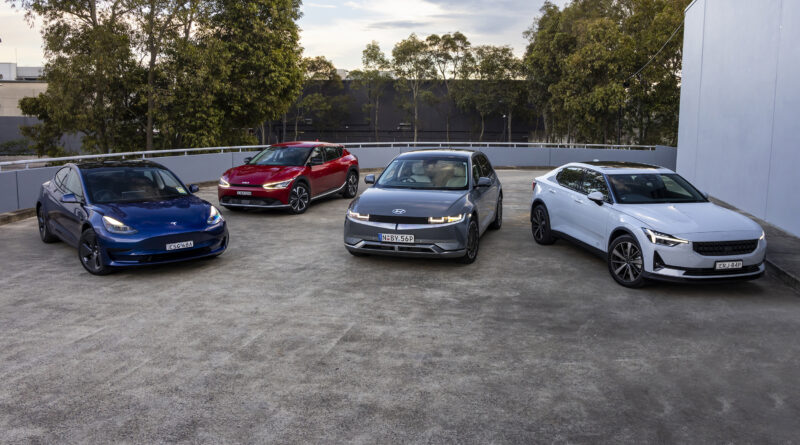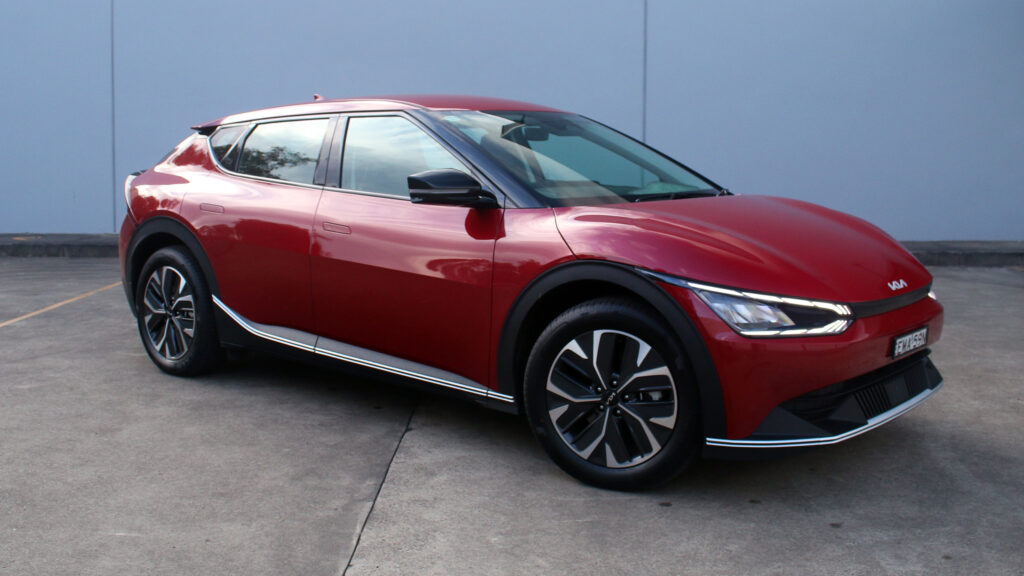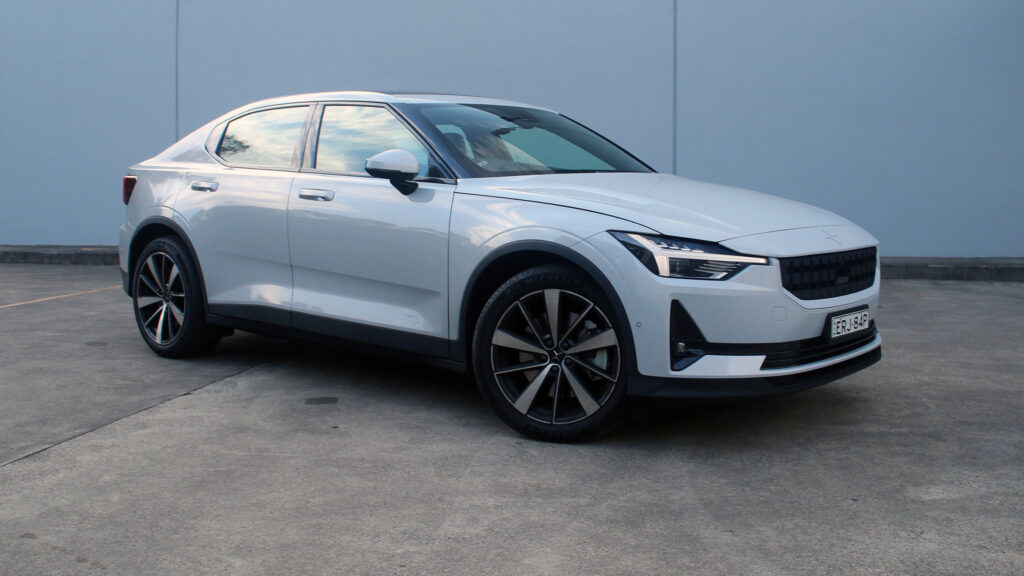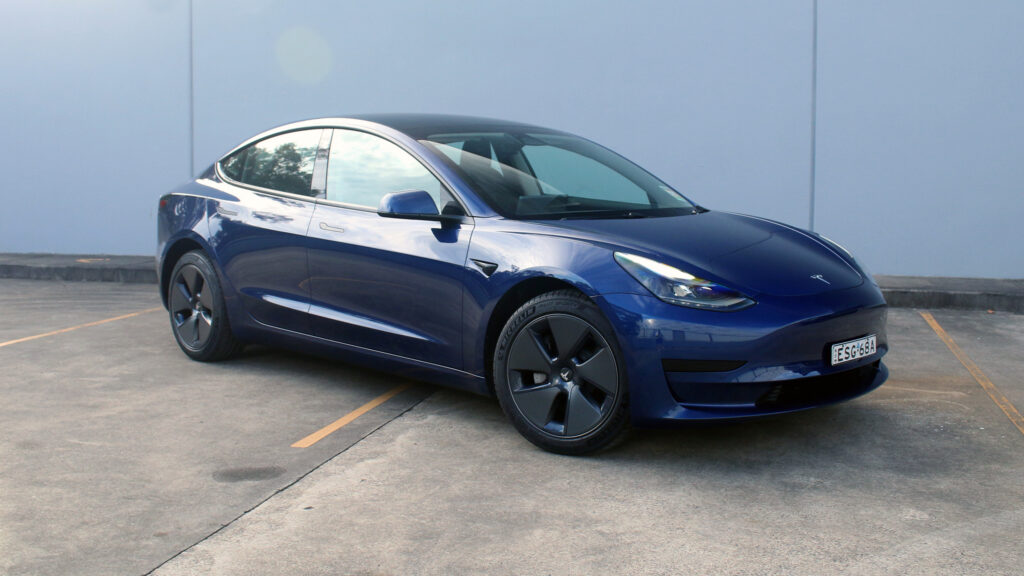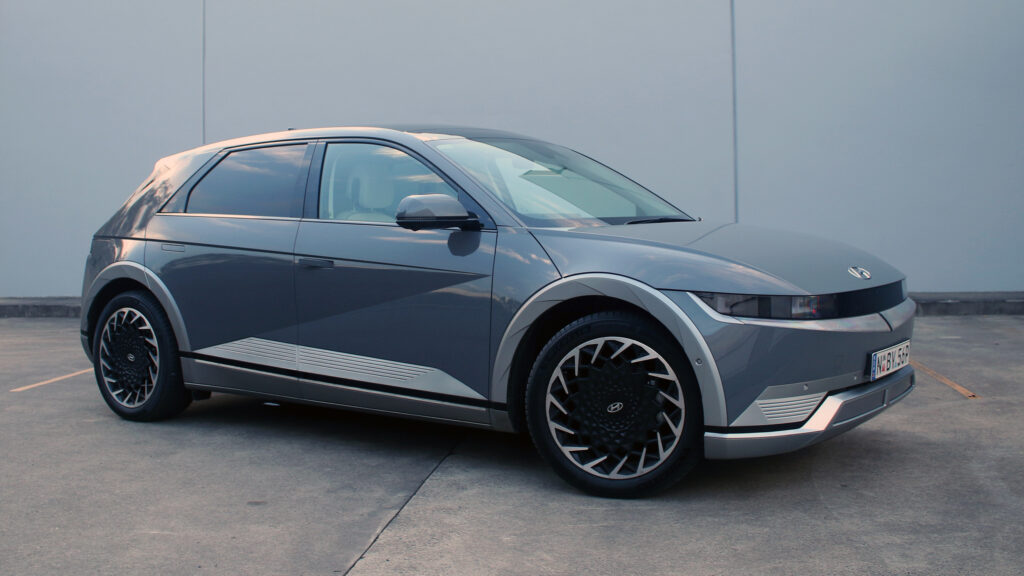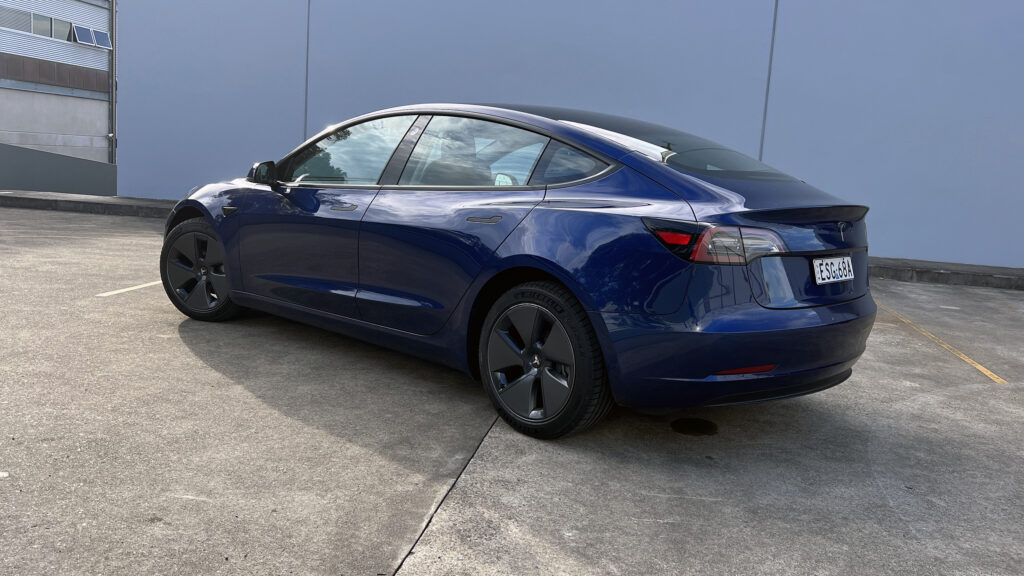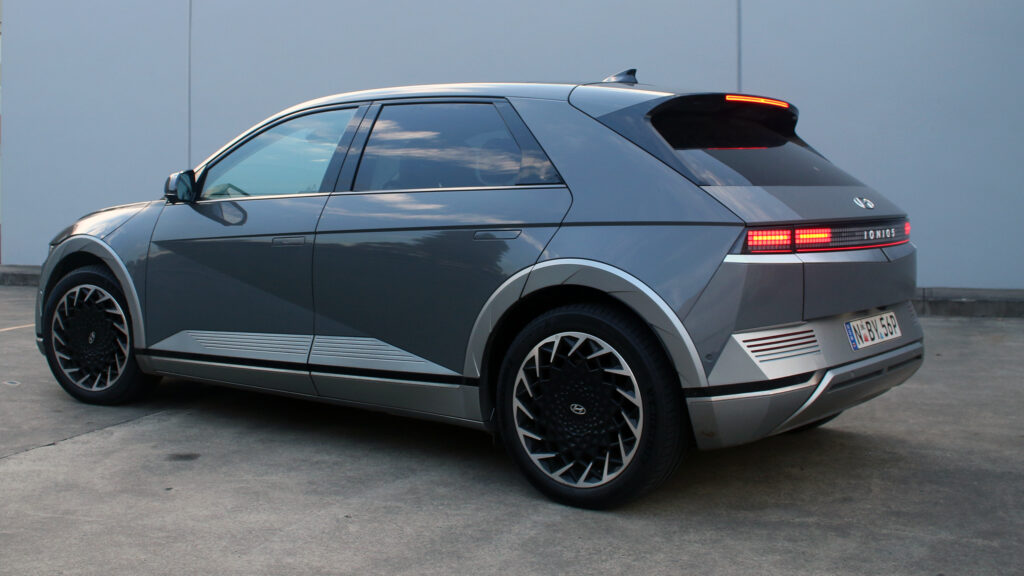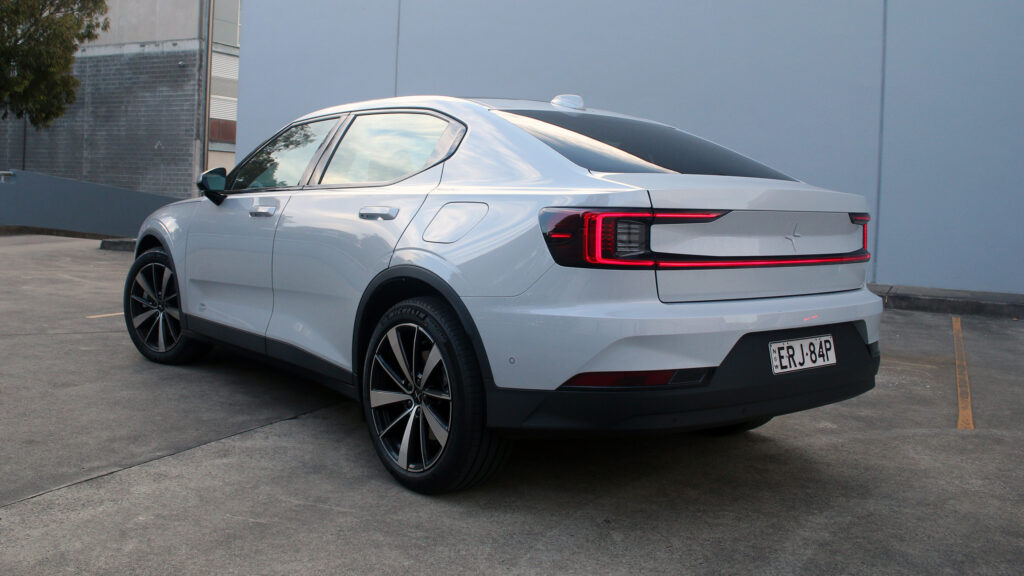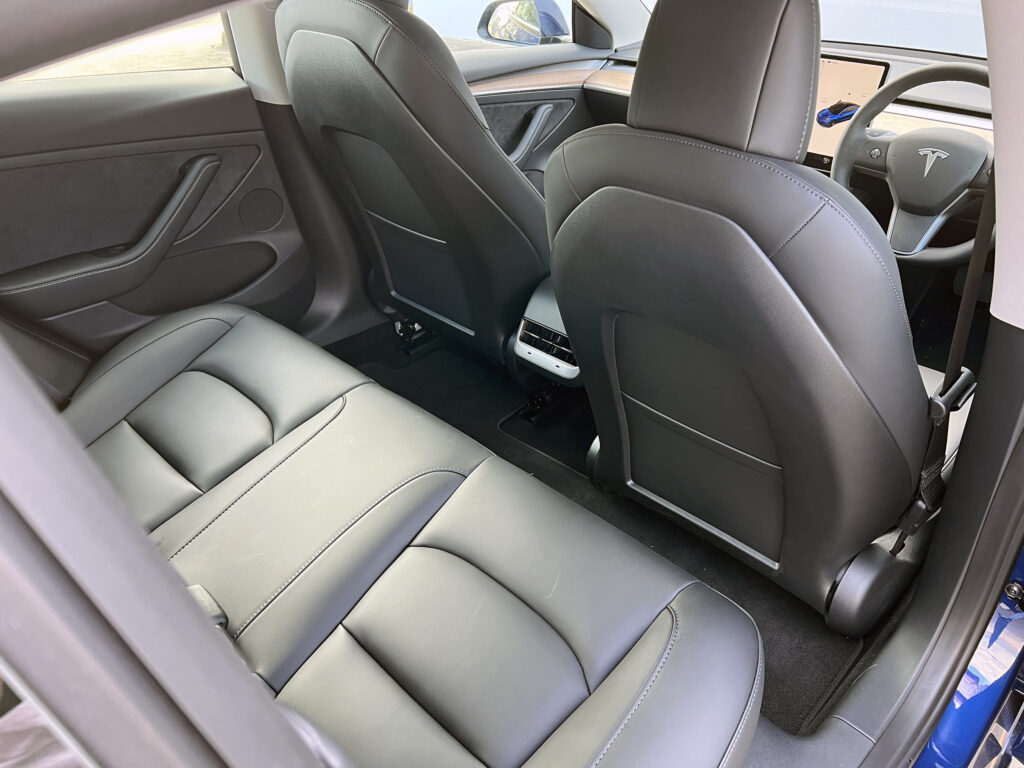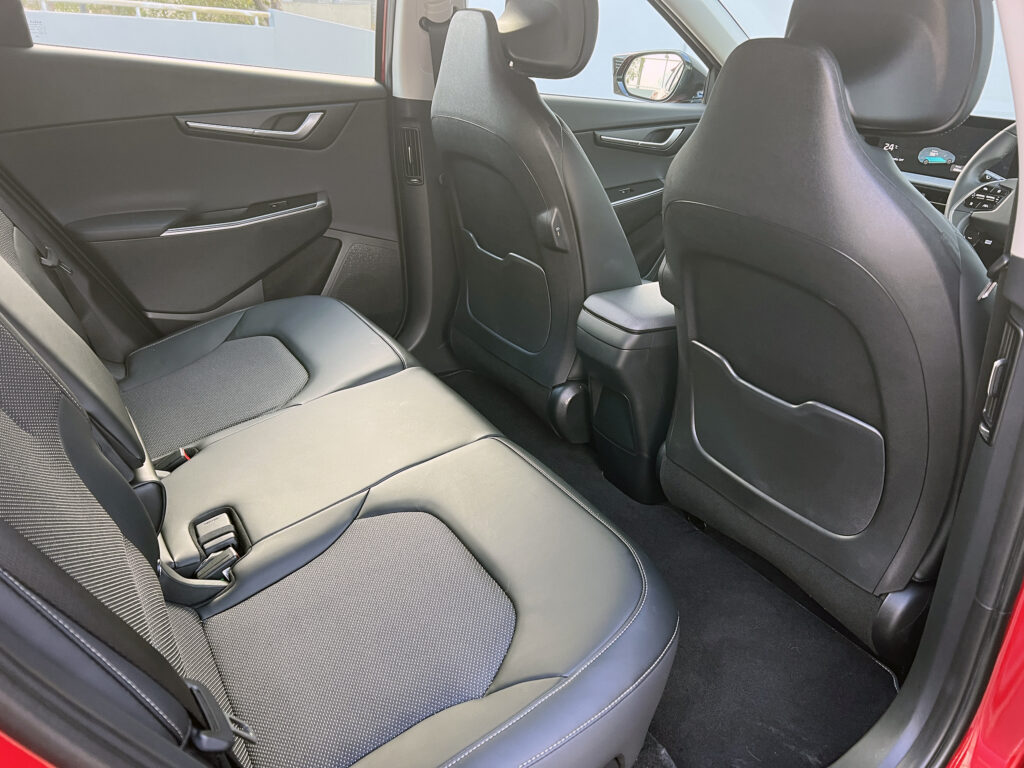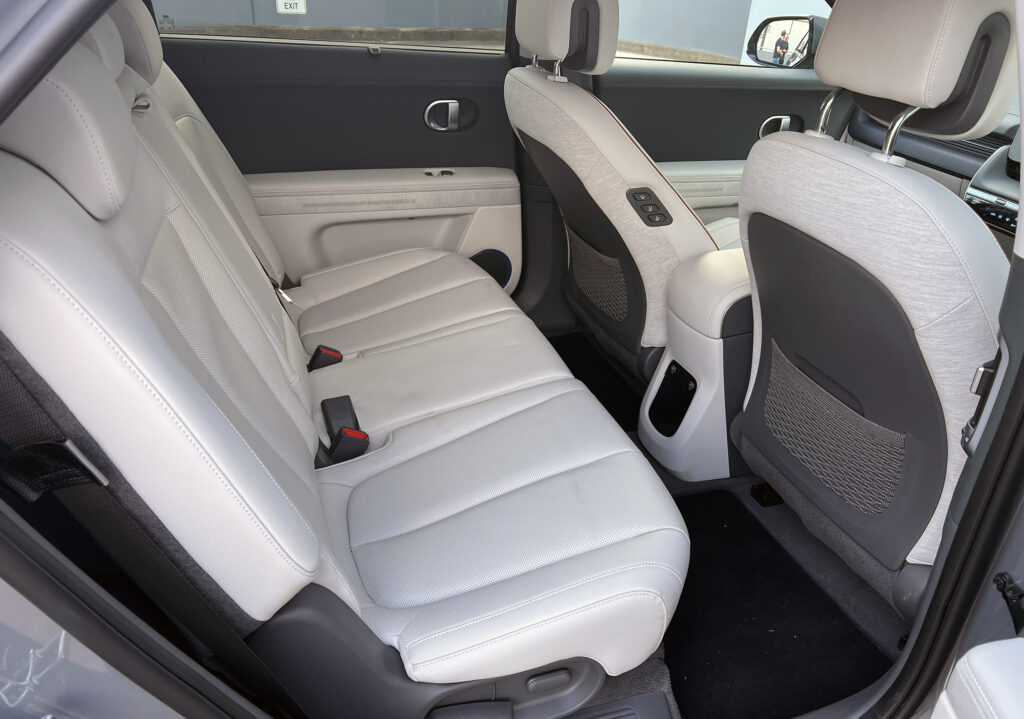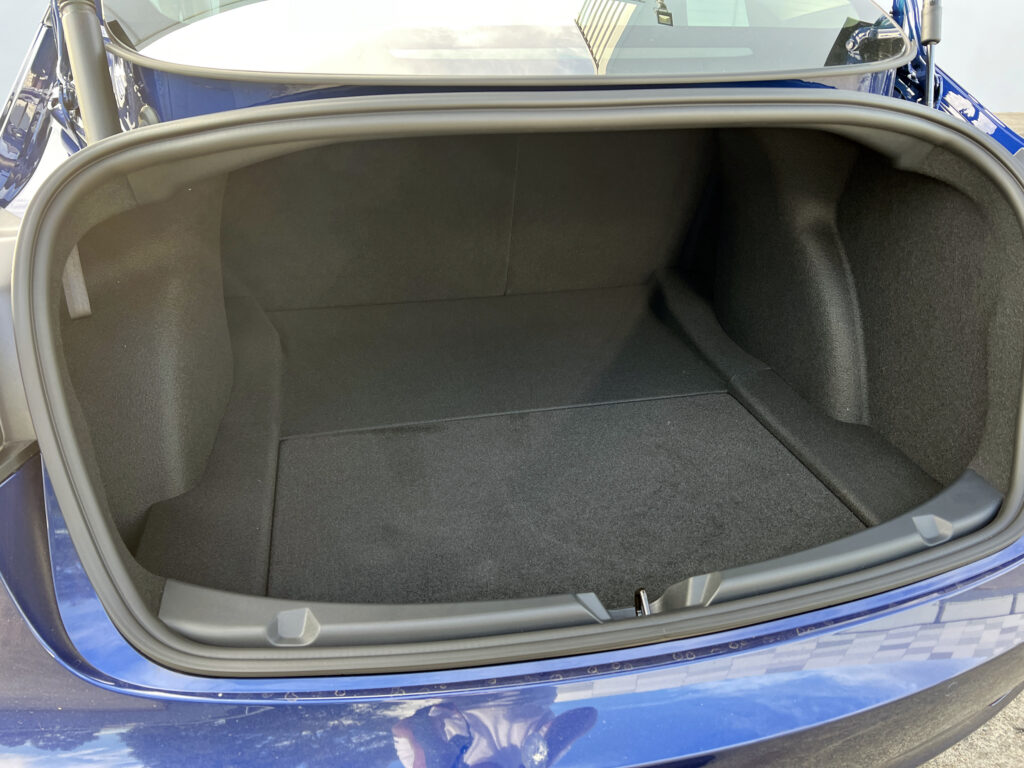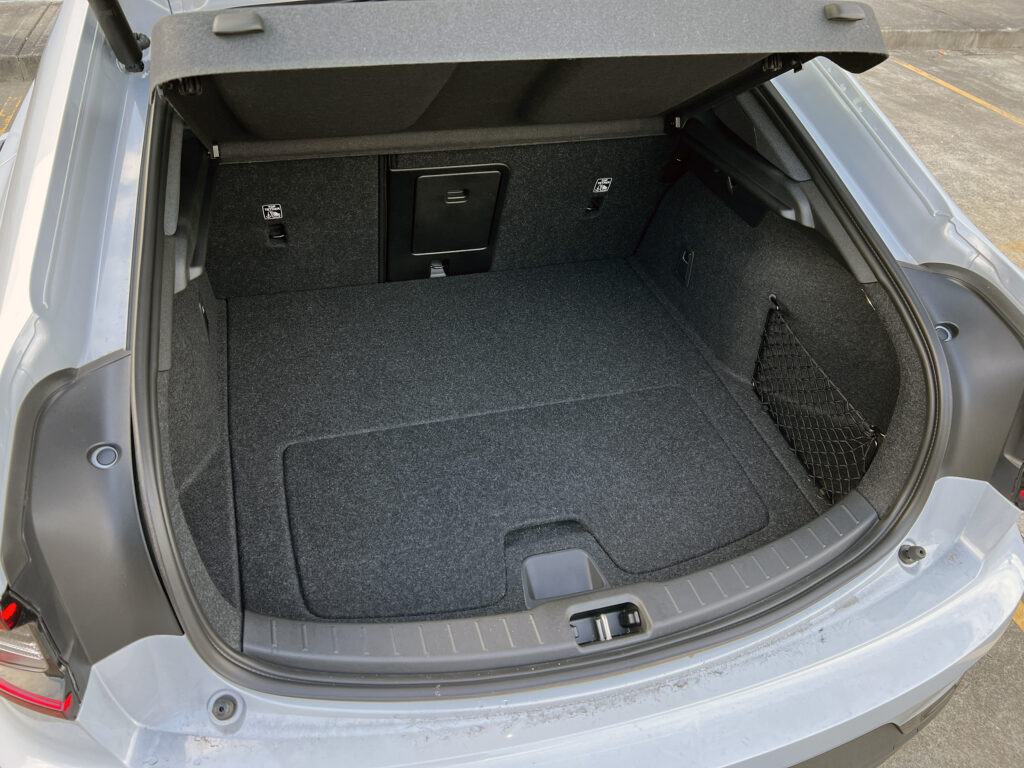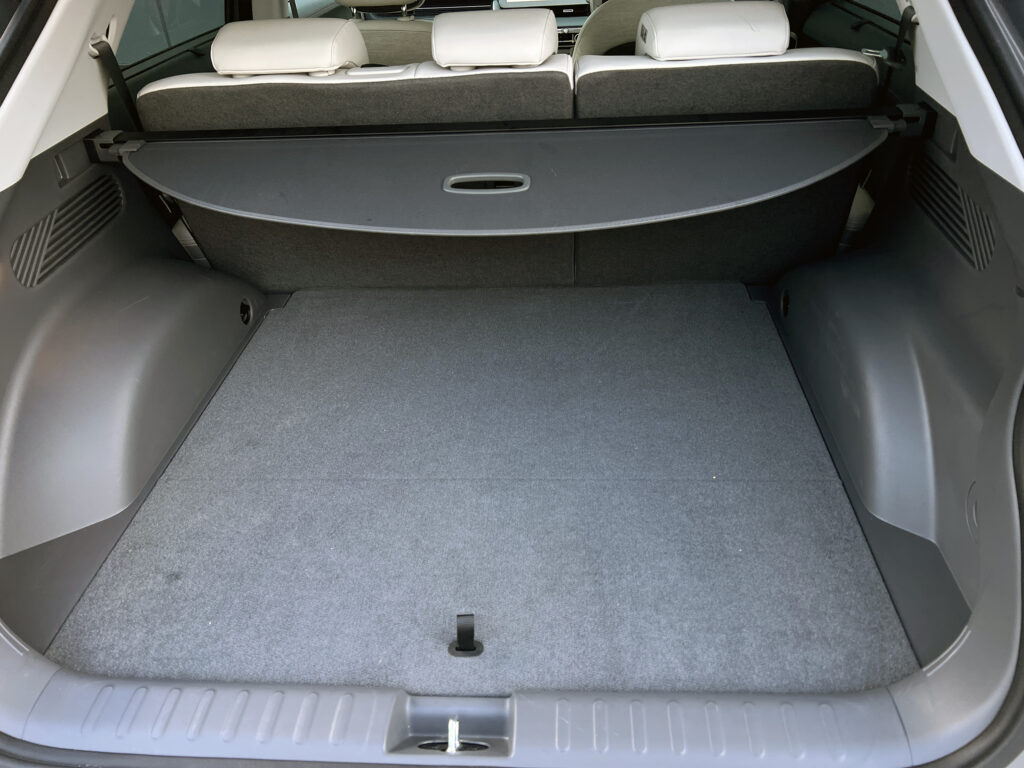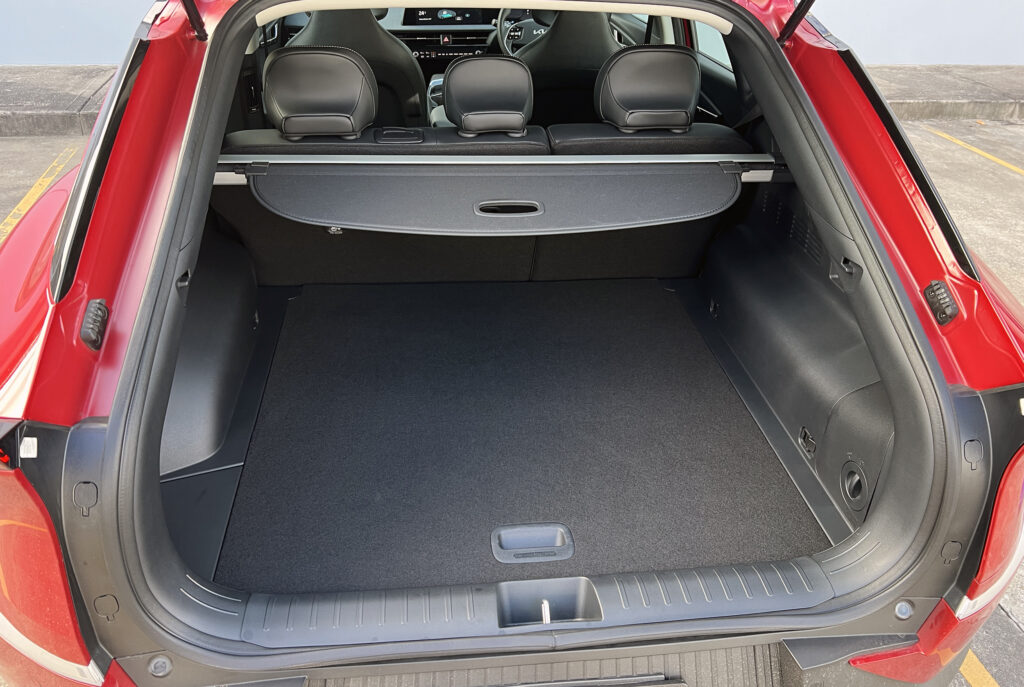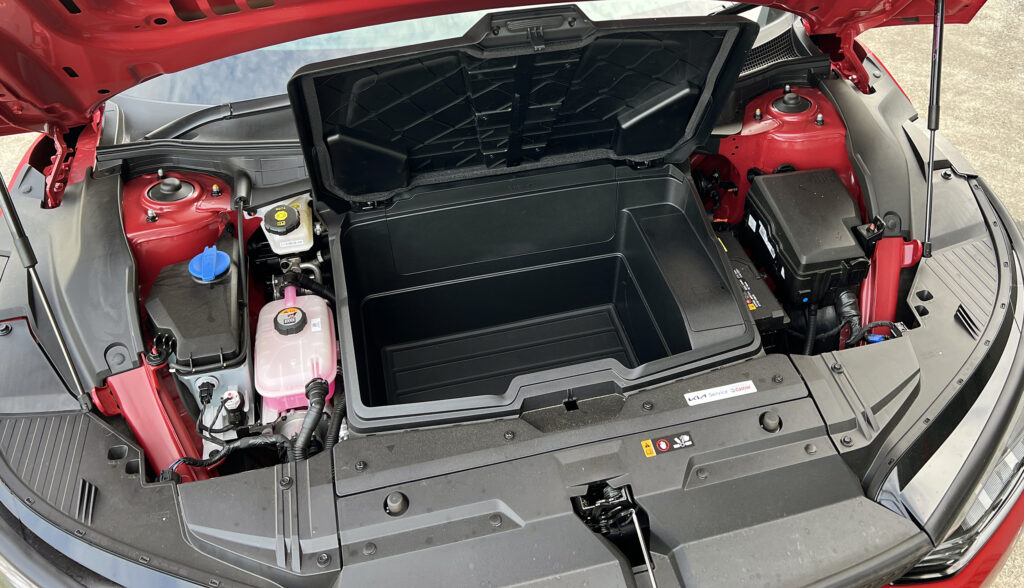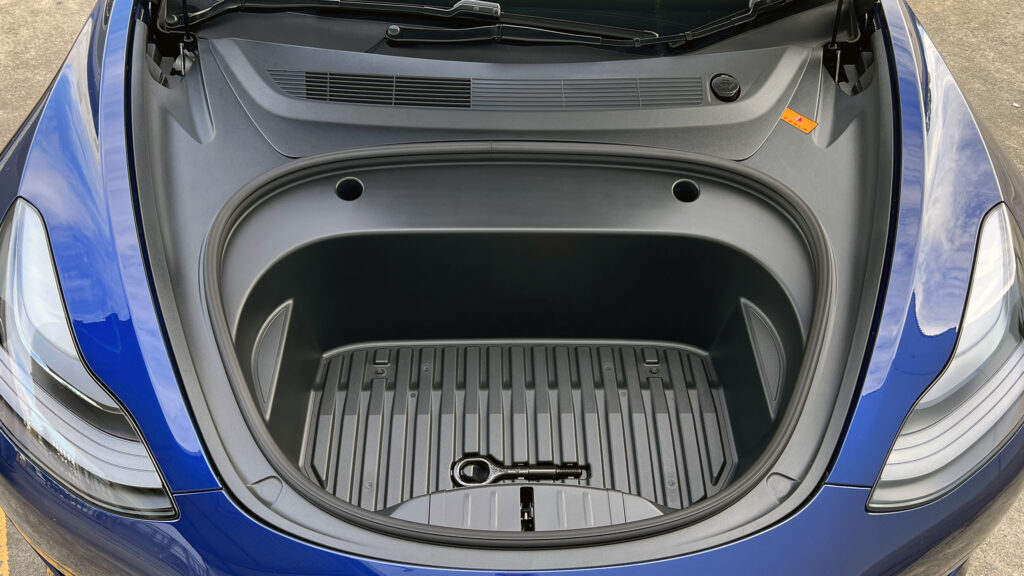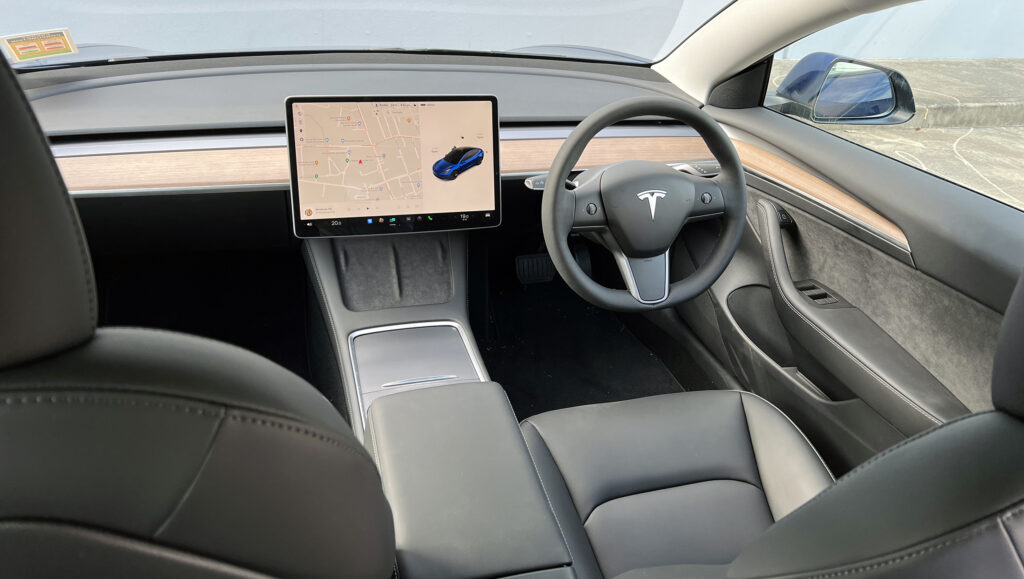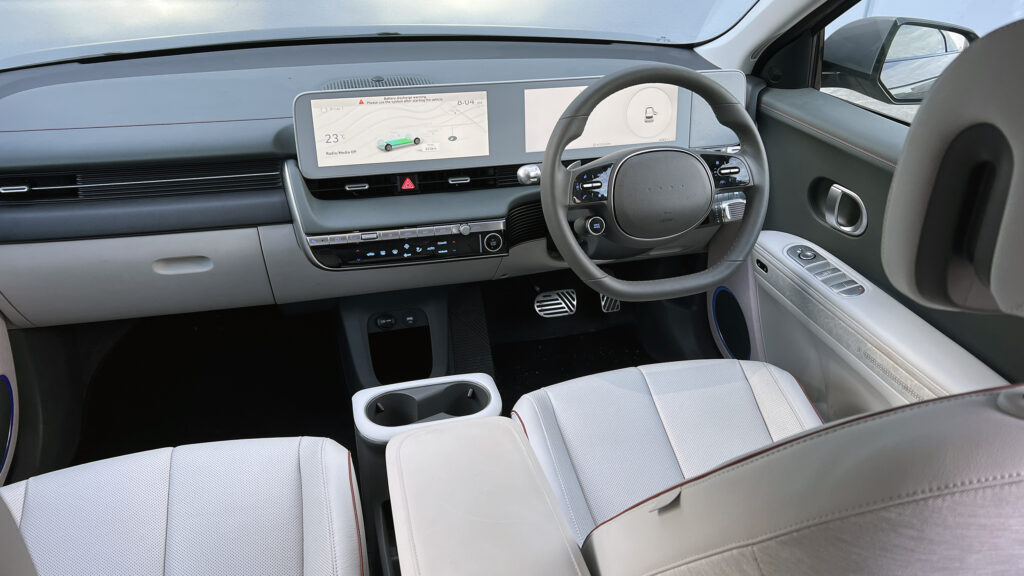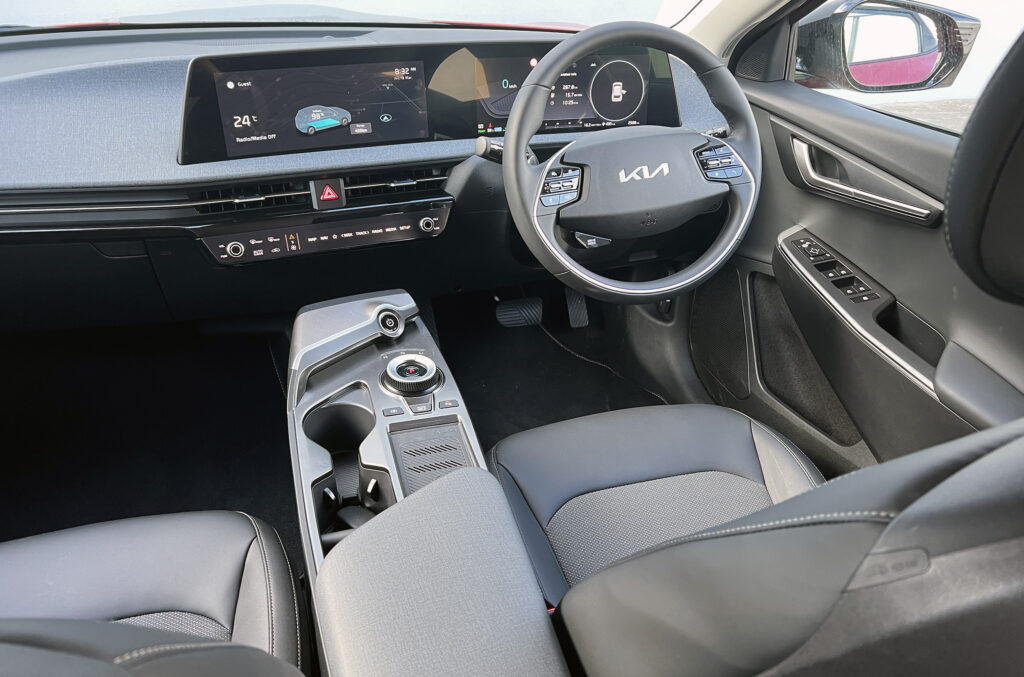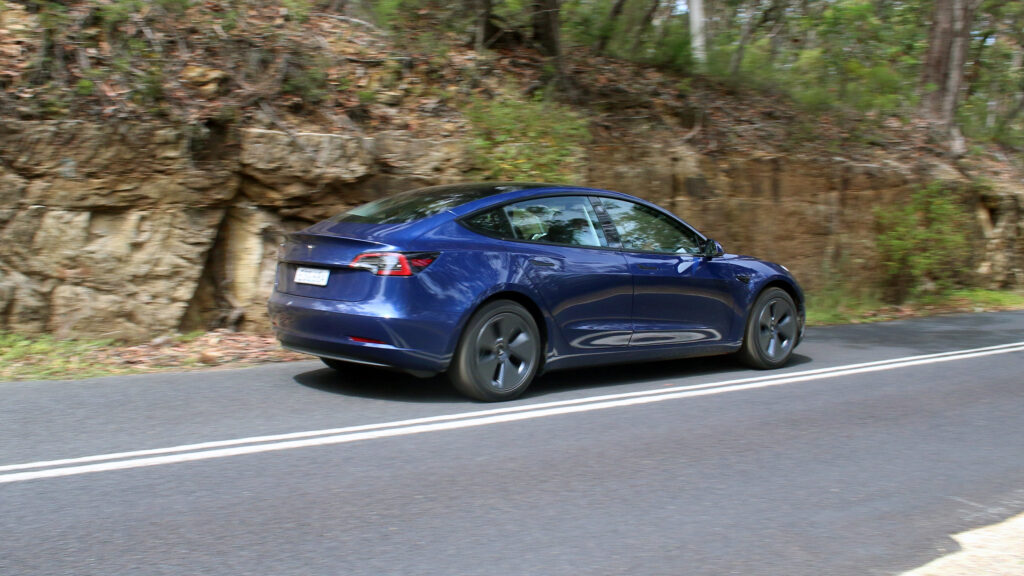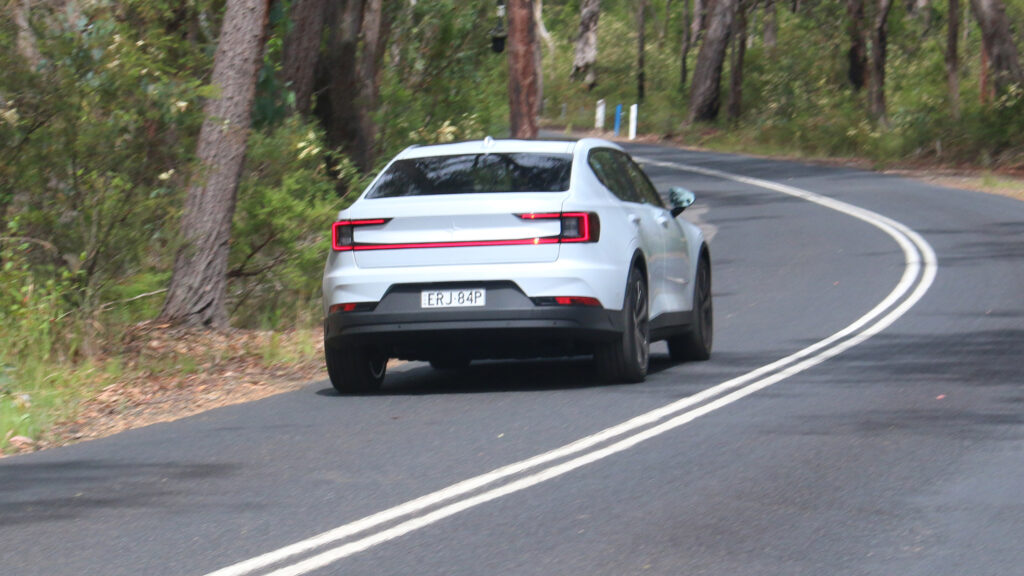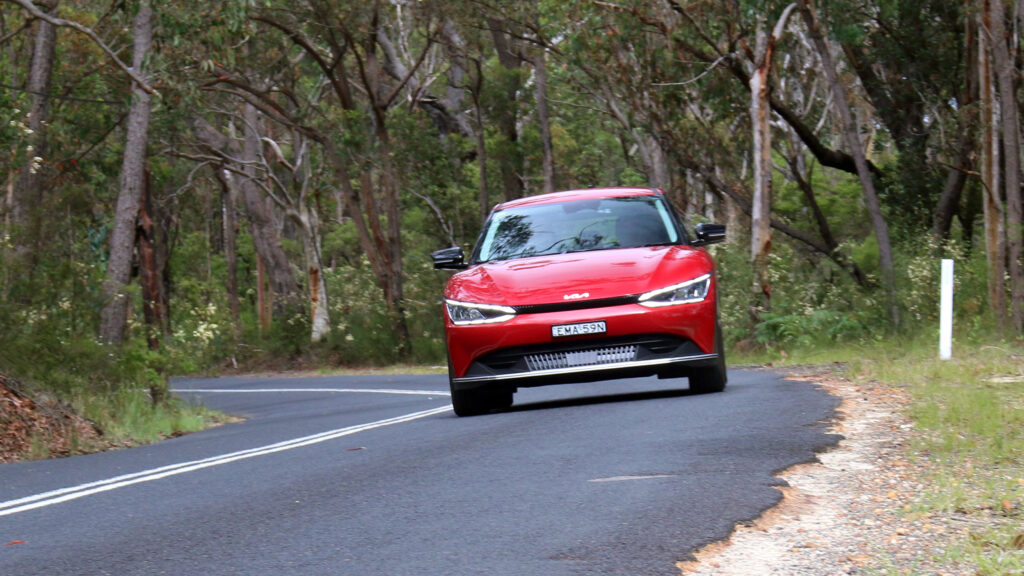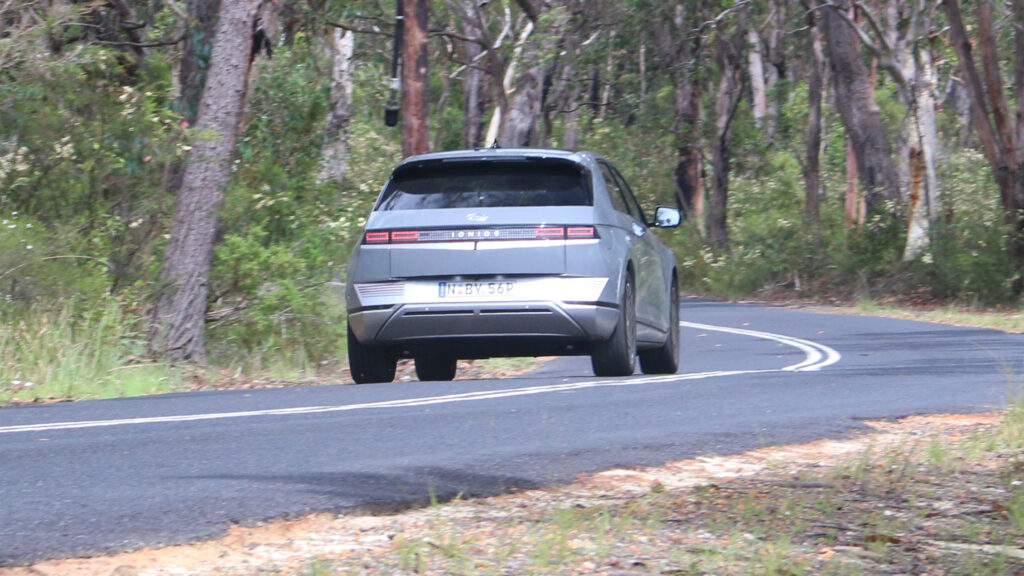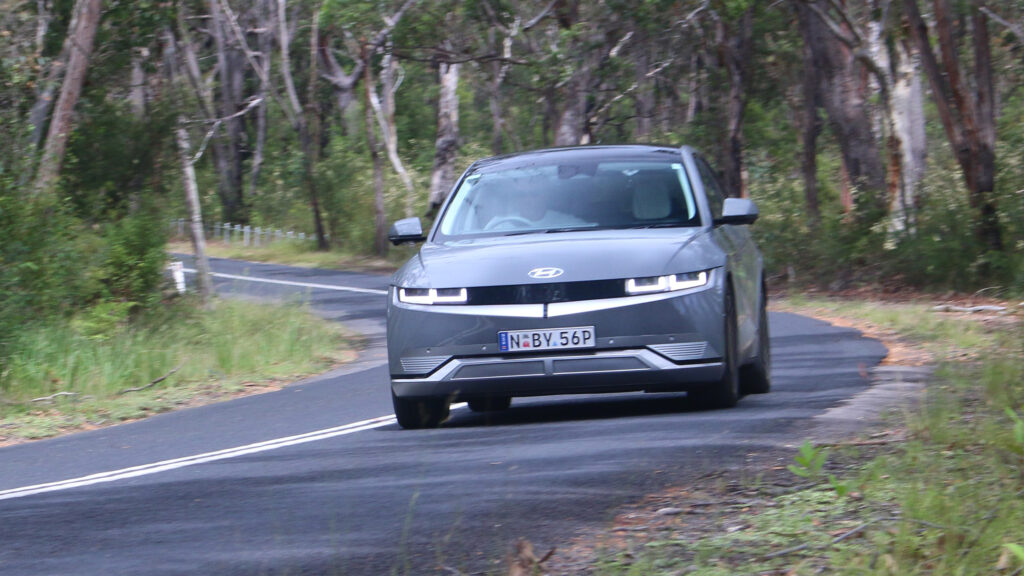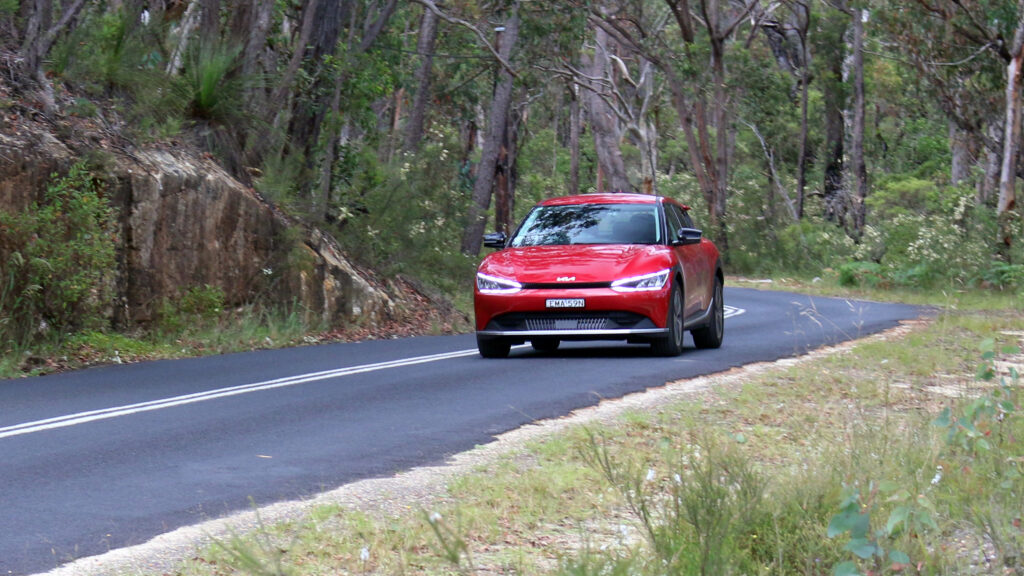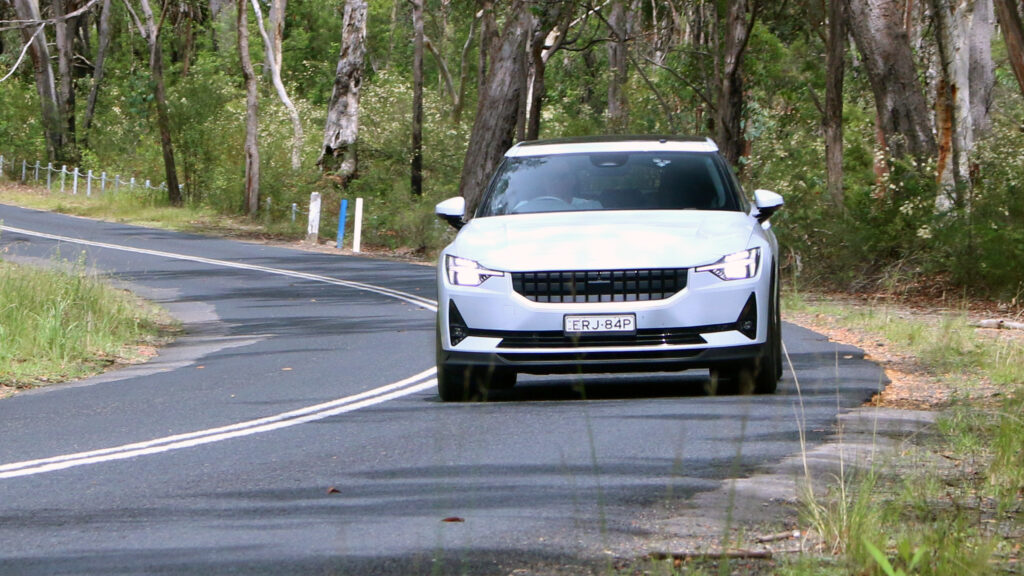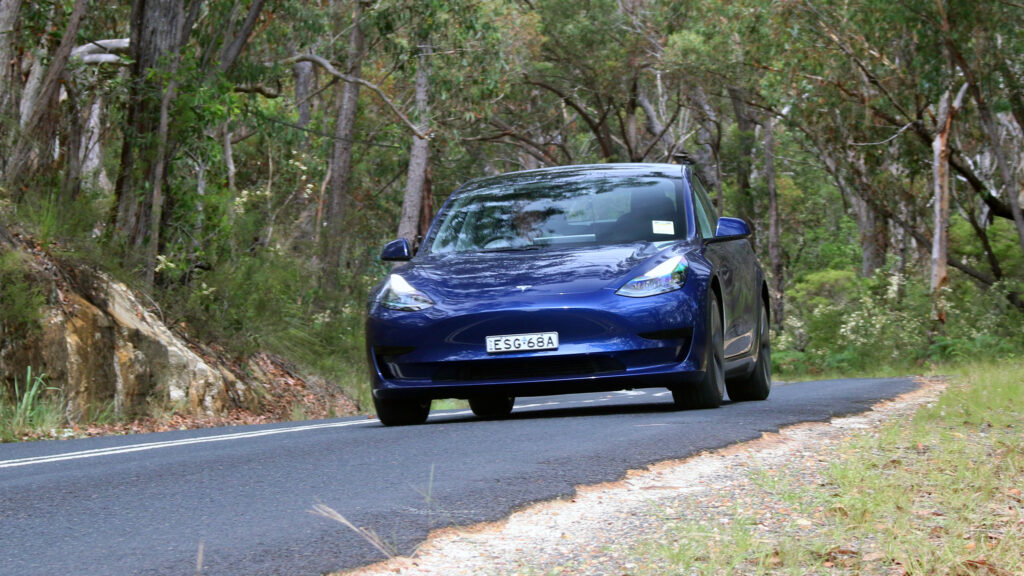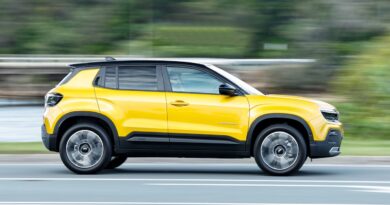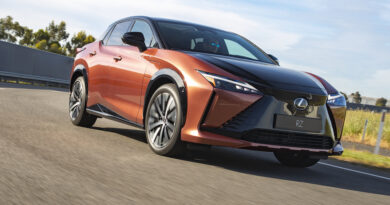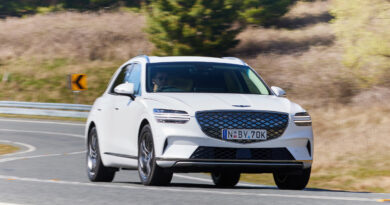Tesla Model 3 vs Kia EV6 vs Polestar 2 vs Hyundai Ioniq 5: Which one is the best EV in Australia?
Model 3 vs EV6 vs Polestar 2 vs Ioniq 5: There’s a sub-$80K sweet spot in the electric car market – and it’s not relying on price alone to tempt buyers. The new breed of challengers aims to tempt buyers away from the unofficial EV king – the Tesla Model 3 – by offering a more tempting proposition.
That’s something we wanted to anaylse with this exclusive four-way test.
Our first combatant is the Tesla Model 3. Granted, the recently-arrived Tesla Model Y makes just as much sense, but it wasn’t available as we were pulling this test together. Besides, the Model 3 still mounts a solid EV case and consistently has Australians queueing to own it.
The most obvious rival to the Model 3 is the Polestar 2, which is unashamedly positioned almost dollar-for-dollar against the Tesla.
Then there’s Kia’s EV6, the first ground-up electric car from the Korean brand. It has a sibling in the Hyundai Ioniq 5, which is also the brand’s first EV created from the ground up to be electric only.
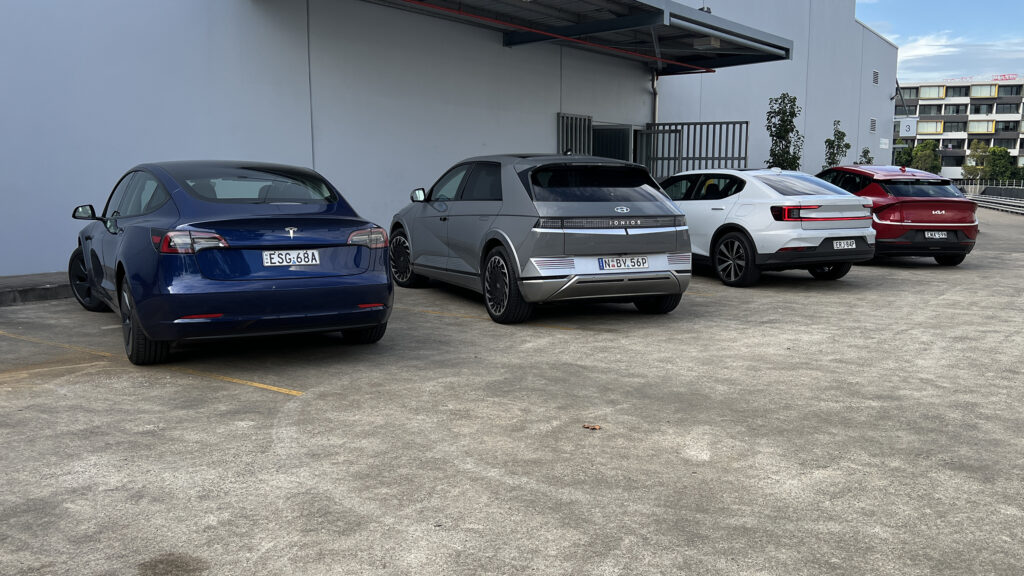
For this test we’ve also chosen the updated Model 3 in entry-level guise, now known simply as the Rear-Wheel Drive.
Not much has changed visually, but Tesla upped the claimed range and added a few extra features.
In each instance we’ve chosen the most affordable options using a single electric motor for propulsion, although in the case of the Polestar it had options fitted.
Being designed from the outset as EVs, the Tesla, Kia and Hyundai have their e-motors in the rear driving the back wheels.
Because the Polestar has adapted a structure also used to house an engine and gearbox it packages its e-motor up front driving the front wheels.
Value
None of this quartet is cheap, but all are towards the value end of the EV market.
Sure, there are cheaper options. But many – including the Hyundai Kona Electric and MG ZS – look and feel like cheaper options.
These EVs are the real deal.
But even within our four contenders there’s a split, the Kia and Hyundai taking the higher ground as part of the strategy to position each as premium products with premium price tags.
The Tesla and Polestar are both priced to take advantage of $3000 subsidies available in various Australian states and territories.
And it’s the Polestar that is most affordable, at $63,900 before on-road costs.
A recent price rise (the third this year) for the Tesla Model 3 Rear-Wheel Drive inches its ask up to $65,500 before costs.
Despite its relatively affordable price, the Tesla comes generously appointed, with electric adjustability to the front seats and steering wheel. There’s also seat heating for all five positions, a heated steering wheel, panoramic sunroof, powered tailgate, dual wireless phone chargers and a 360-degree camera.
Despite no Apple CarPlay or Android Auto connectivity – something available on the three rivals – Tesla’s in-house connectivity does a remarkably good job of interacting with a phone, even integrating a calendar and dishing up one of the tastiest navigation systems we’ve experienced.
There’s also a huge 15-inch screen that doubles as the instrument cluster and the nerve centre for everything from arcade games, infotainment and adjustment of mirrors to opening the glovebox or adjusting the car’s myriad personalisation settings.
The Model 3’s 18-inch wheels are the smallest on offer here and come with plastic wheel covers to improve aerodynamics, although they look classy. And while there are no keys (they’re optional at $235), the ability to use your phone is arguably a better solution; key cards work fine as a backup.
One oversight is the warranty, which is an undernourished four years or 80,000km (double that for the high voltage battery). While Australian Consumer Law would likely cover most components for longer, there could be more wrangling to get the desired result.
The Polestar 2 also throws in servicing for the first five years and 100,000km, something that is potentially worth a couple of grand.
It’s a tempting offer, although the P2’s standard equipment list is skinnier. There are, however, real keys, including a water resistant one that can even come swimming with you. There are also 19-inch wheels and Polestar Connect that can automatically direct emergency services to the vehicle after a crash.
Front seats are heated but only partially electric and the 11.2-inch touchscreen has Android Automotive embedded.
Our car also had a bigger battery, which adds $5000.
Plus it had two option packs. The $3400 Pilot Lite pack incorporates adaptive cruise control, blind spot warning, rear cross traffic alert and a 360-degree camera.
The $6000 Plus pack brings a panoramic sunroof, full power operation of the front seats, heated rear seats and wireless phone charging. There are also classier finishes inside and a heat pump to improve efficiency, especially in cool weather.
From there, it’s a step up to the Korean contenders, starting with the EV6. The Kia was previously a tempting proposition but a recent price rise means it’s now $71,300 before on-road costs for the entry-level EV6 Air.
At that prices it surges past those rebates, making the Kia at least another $3000 more expensive on top of the raw numbers mentioned here.
Still, the EV6 comes with all the safety systems (more on that later) as well as some fake leather and suede. There are also innovative sustainable materials as part of the green sales pitch.
Dual digital displays also dominate the dash, while there’s smart key entry, navigation and wireless phone charging. Wheels measure 19 inches in diameter.
The Kia also gets the longest standard warranty at seven years, although its battery warranty is also seven years (and 160,000km), which is one year less than that covering the other three on test here.
The Hyundai matches the Kia with its dual screens, but packs in plenty more for its $71,900 ask.
There are 20-inch wheels and door handles that pop out automatically when you approach the car, a panoramic sunroof, heated and electric adjustment for seats front and rear, and ventilated front seats.
Those in the rear get blinds, plus there’s a powered tailgate and 360-degree camera. The Ioniq 5 also gets a Bose sound system.
There’s one biggie missing from both the Hyundai and Kia: remote connectivity.
Tesla leads the way with its app and Polestar offers some basic smartphone functionality. But with Hyundai and Kia there’s currently no activating ventilation systems or checking the charge status from your phone. It’s coming, but can’t be had on the current crop.
Space and versatility
The Polestar is the only one of our contenders that sits on the architecture of an ICE car. The other three were designed from the outset as an EV, placing front and rear wheels further apart and optimally positioning the battery pack in the floor rather than adapting it into spaces previously taken by drivetrains and fuel systems.
So, there are marked differences.
From the outside all four of these are between 4.6 and 4.7 metres long, but it’s the Polestar that is the shortest, at 4606mm. The Polestar is also the only car here that sits on the architecture of an internal combustion engine (ICE) car.
No surprises, then, that the Polestar has the least occupant room inside. It’s fine up front, each person cocooned in an upmarket cabin with seats that hug in all the right places. But those in the rear will find only modest legroom and foot space encroached on by a transmission tunnel in the centre of the floor.
The other three get flat cabin floors that make for a more open and welcoming space.
While it’s narrower and lower, the Tesla Model 3 ensures those in the rear are well catered for. The vast glasshouse helps with headroom, although without a shade cover things can get steamy on sunny days (Tesla sells optional clip-on shades).
But it’s the Kia and Hyundai that win on space. Each is very adult-friendly in the back seat with loads of knee and headroom. Taller folk may find their thighs a tad higher than the may prefer, a result of the battery built into the floor.
The purpose-built EVs – Kia, Hyundai and Tesla – also win when it comes to luggage space. They have broader boot areas, with the Hyundai winning on overall space.
The Polestar does get some useful underfloor storage, but if packing in plenty of bags is your main aim then the others do it better. That said the Polestar’s flip-up load locator is handy for keeping smaller bags from roaming around the luggage area.
Similarly, there’s some useful under-bonnet storage in the Polestar – great for charging cables and valuables – but the others fight back with more. It’s the Tesla that offers the most for those planning on using the ‘frunk’ (or ‘froot’).
Inside/cabin ambience
If it’s luxury you’re after, then there’s a clear winner here: the Polestar 2.
It’s the closest to a traditional luxury car in terms of the finishes and materials and overall presentation. From the optional WeaveTech material on the seats to the tactile finish across the dashboard and even the brand logo – the North Star – glowing from the front of the panoramic sunroof at night. Ambient lighting glows around the wood finishes and the door handles reinforce the tactility and attention to detail.
The Tesla is at the other end of the spectrum. It’s a minimalist interior dominated by an enormous 15-inch touchscreen. Without that screen the cabin would look stark – and you also wouldn’t be able to operate the vehicle, because there’s so much packed into it, from navigation and audio functions to virtual buttons to open the bonnet, boot and glovebox. That centre screen also incorporates the instrument cluster and many of the fun features of the Tesla, from the whoopee cushion fart sounds and 360-degree dashcam to the karaoke and Sentry mode, the latter capable of recording someone who damages the car while it’s parked.
Less endearing is the Tesla’s seat trim, which has too much of a plasticky feel for something vaguely trying to be leather.
Things are very different from the Korean brands, with mixed success.
In the Hyundai there are some different materials focused on sustainability. But there’s also a lot going on. Light seats and lower door skins and interspersed by some of that sustainability then there’s a dark upper dash. Silver finishes liven things, but lack the coolness of real metal; at least the pedals are finished in alloy.
The steering wheel is also quite upright, combining with the driver’s seat to create a good view but less of a sense that you’re snuggled in for the drive.
No such issues on the Kia, which also has a more formal and traditional look. Physical controls for the audio system can toggle to control the ventilation, which is a nice way of reducing the number of buttons without forgoing the tactility of real controls rather than ones integrated into a screen.
Like the Hyundai it’s also excellent for storage, with cubby holes and deep binnacles scattered throughout.
And a final word on sound systems. The best overall is the Tesla’s courtesy of punchy bass and clear high notes. It’s an unbranded system designed in-house by Tesla, but it’s a quality bit of audio kit.
The Polestar’s optional Harman Kardon system comes home second, lacking some of the outright punch of the Tesla but delivering on crispness and clarity.
Hyundai’s Bose system is also above average with the sort of fire and fervour the audio specialist is known for.
And while the more expensive EV6 gets a Meridian system, this entry-level Air misses out. The basic sound system is OK but lacks the fidelity of rivals.
Performance and efficiency
Each of our quartet has a single electric motor driving two wheels.
In the Polestar the motor sits under the bonnet and powers the front wheels.
In the three designed from the start as EVs the motor is under the boot floor and powers the real wheels.
On a wet road the trio of rear-drivers gets their power to the ground more consistently, whereas the Polestar will occasionally slip as the weight transfers off the nose under acceleration.
It’s quickly contained, but can lead to the occasional stumble.
In terms of performance, none are slow, something helped by the near-instant reaction to any throttle input. Driving through a single-speed reduction gear also means there’s no shuffling between gear ratios, so, again, everything happens fairly swiftly and on command.
It’s the Tesla that’s the quickest, though, and by some margin. That’s in part because its electric motor has comfortably the most power, with 194kW of power backed up by a thoroughly respectable 340Nm of torque. The Model 3 RWD is also the lightest by a long shot, shaving around 200kg off the weight of its three rivals.
Our numbers backed it up. We tested each on an identical patch of road using a satellite-based VBox performance testing unit.
The Model 3 Rear-Wheel drive took 6.31 seconds to hit 100km/h, which is brisk. More impressively, it scampers from 60 to 100km/h in a fraction under 2.5 seconds. That’s handy when coming onto a freeway or overtaking.
It’s that higher speed acceleration that gives the Tesla its edge. Below 60km/h it was outdone by some of its rivals; only just, but considering the advantage it enjoys once you’re moving it’s a pertinent point.
The Tesla was also almost a second quicker than the next best, the Kia V6 Air. It hit 100km/h in 7.21 seconds and took 3.54 seconds for the 60-100km/h sprint. That gels with its outputs, too, at 168kW and 350Nm.
The Hyundai uses the same basic hardware but is claimed to produce slightly less power, at 160kW and the same 350Nm. Our weighbridge also showed the Hyundai to be 67kg heavier than the Kia.
Our testing showed a more marked difference than those raw numbers may suggest, with the 0-100km/h sprint taking 7.74 seconds and the 60-100km/h time 3.82 seconds. It’s a fair difference, but is not nearly as noticeable once the stopwatch is taken out of the equation.
The Hyundai is still plenty brisk enough to scythe through traffic and zip up hills.
Similarly, the Polestar 2’s 170kW/330Nm output and portly 2019kg body (remembering ours had extras that would add to its overall weight) mean it’s not quite as perky as some. But its 7.62-second 0-100km/h time is still decent and the sub-3.5 seconds taken to accelerate from 60-100km/h equally acceptable.
Tesla v Polestar v Kia v Hyundai: Performance figures
| Acceleration (seconds) | Hyundai Ioniq 5 RWD | Kia EV6 Air | Polestar 2 Single Motor Long Range | Tesla Model 3 RWD |
| 0-10km/h | 0.70 | 0.56 | 0.83 | 0.80 |
| 0-20km/h | 1.45 | 1.19 | 1.29 | 1.35 |
| 0-30km/h | 2.04 | 1.79 | 1.91 | 1.84 |
| 0-40km/h | 2.67 | 2.43 | 2.69 | 2.72 |
| 0-50km/h | 3.50 | 3.07 | 3.27 | 3.30 |
| 0-60km/h | 3.92 | 3.67 | 4.17 | 3.82 |
| 0-70km/h | 4.54 | 4.34 | 4.76 | 4.34 |
| 0-80km/h | 5.52 | 5.19 | 5.56 | 4.93 |
| 0-90km/h | 6.76 | 6.20 | 6.69 | 5.53 |
| 0-100km/h | 7.74 | 7.21 | 7.62 | 6.31 |
| 60-100km/h | 3.82 | 3.54 | 3.45 | 2.49 |
Charging: Tesla vs Polestar vs Kia vs Hyundai
In its ongoing quest to shun numbers the Tesla Model 3 does the same with its battery capacity. There is no official figure, with Tesla instead pointing to the 491km of WLTP range.
A quick calculation from the data Tesla spits out on that ginormous touchscreen suggests the usable battery capacity is about 60kWh. That makes it the smallest battery here.
But it’s also the most efficient car, using an average 13.4kWh of electricity per 100km. Realistically you should be able to get around 440km in everyday driving.
At the other end of the spectrum is the EV6 Air, with a 77.4kWh battery with a usable capacity of about 73kWh. The WLTP range is a class-leading 528km and our experience suggests you’ll get somewhere close to 500km in the real world. It uses a claimed 16.5kWh/100km doing it.
The Ioniq 5 uses 17.9kWh/100km, the extra mostly down to its more aggressive (and less eco-focused) tyres. It also gets a slightly smaller battery than its Korean sibling, with an overall capacity of 72.6kWh and a usable capacity of something like 70kWh. The WLTP range is the lowest here, at 451km. Realistically you’ll have to be charging after about 410km.
Then there’s the Polestar, which has the largest battery here – keeping in mind we’ve got the Long Range model – with an overall capacity of 78kWh and a usable capacity of 75kWh.
That unleashes a significant WLTP range of 540km (the mildly updated model has increased that to 551km), although our testing suggests somewhere closer to 460km. Anyone good with their maths will realise it’s using the most electricity, claimed at 19.7kWh/100km.
While that sounds like plenty compared with the Tesla, it’s worth keeping it in perspective against ICE machines. Charged from home using grid electricity, it’ll cost something like $6 to cover 100km.
Speaking of charging, from a home powerpoint all four of these will take many hours to top up; from about 27 hours in the Tesla to about 33 hours for the Polestar or Tesla. That, of course, is assuming the battery is completely flat; if you’re travelling less than 150km then an overnight charge should easily bring them back to full charge.
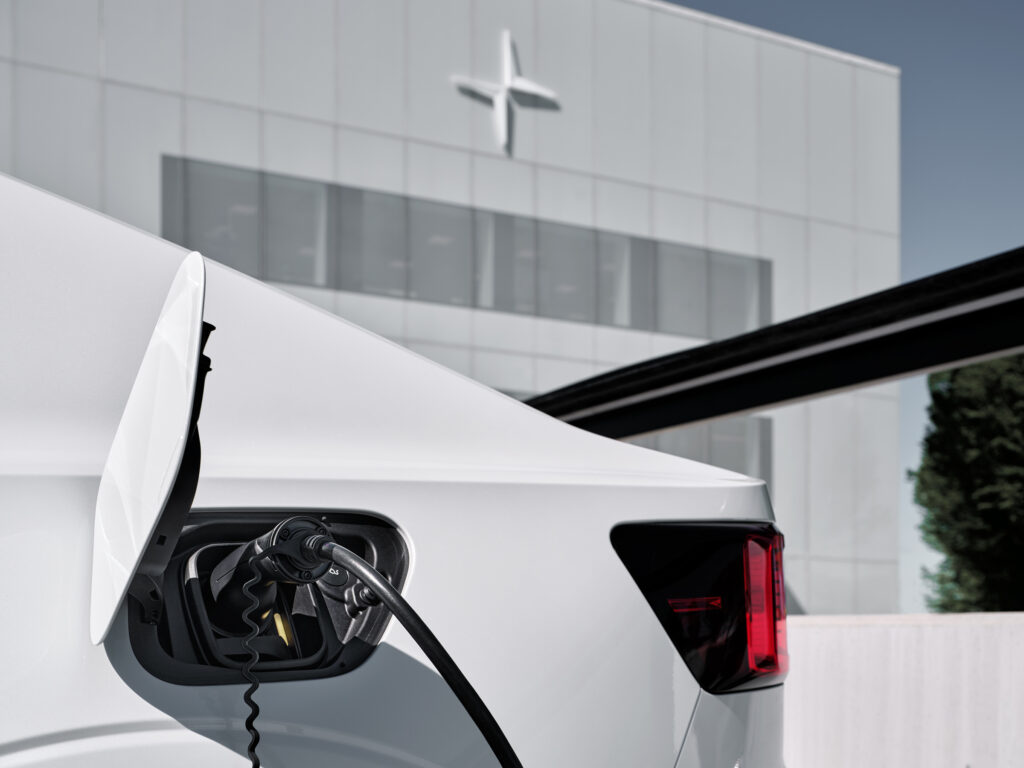
Most EV owners will have a wallbox installed at home for faster charging. Get one of the cheaper 7-ish-kilowatt wallbox home chargers and the charge times drop significantly. Think something like nine hours for the Tesla, 10.5 hours for the Hyundai and 11 hours for the Kia and Polestar.
Buy a beefier wallbox charger and those charge times drop to about 5.5 hours (Tesla), 7.0 hours (Hyundai), 7.3 hours (Kia) and 8.0 hours (Polestar).
For those hitting the road for a big drive it’s the DC fast charging that is the key metric – and that’s where the Kia and Hyundai fight back.
Each has the capability to be charged at 800V, versus the EV norm of 400V. That means on the newer generation ultra-rapid chargers they can accept more power.
But… forget what the Kia and Hyundai brochures say about 350kW charging. They simply cannot take that much power. Instead it’s marketing hype suggesting they can be charged at a 350kW charger – just as the Polestar and Tesla can (and any other EV, for that matter).
Instead, the maximum charge rates for the Hyundai and Kia are about 240kW, which is still very high. And each will put in about 300km of range in about 18 minutes if you perform a 10-80 percent charge.
In comparison the Polestar takes about twice as long for a 10-80 percent charge, its maximum charge rate set at 150kW.
As for the Tesla, there are no numbers quoted, but its maximum charge rate is about 170-180kW. We’ve performed a 10-80 percent charge previously on the latest V3 Tesla Supercharger and found it takes about 28 minutes. That should give you about 310km of range.
Short story, when pushed the Kia and Hyundai will pile on charger fastest and for the Polestar you’ll be waiting another 6-7 minutes compared with the Tesla.
There’s another element to this charging equation: Tesla’s own charging network. While the Tesla can utilise all the EV chargers offered by the likes of motoring clubs, Chargefox and Evie, it can also plug into thousands more chargers than can only be used by Teslas. That gives you something like twice as many locations to charge at, something that can’t be overlooked – whether trundling around town looking for ‘free’ electricity or taking off on the Big Trip.
Model 3 vs EV6 vs Polestar 2 vs Ioniq 5: Ride and handling
EVs have an inherent advantage with their centre of gravity due to having a heavy battery pack built into their floor. So while they’re usually not particularly light – even the lightest here, the Tesla, is approaching 1.8 tonnes – having so much of that weight down low means less of the leaning through bends.
That also allows engineers to set the cars up for some fun driving dynamics.
The Tesla takes that thinking to the extreme. Steering is super direct and accurate, to the point where it requires finesse to keep the nose from darting across the road. The suspension is firm to take advantage of its playfulness.
That also means you’ll feel the bumps, the Model 3 reacting to any ripple in the road, but not in a harsh way. It’s taut but not punishing.
Given the target-Tesla approach taken by the Polestar 2 it’s perhaps no surprise that there’s an emphasis on cornering excitement over comfort. At low speeds, in particular, the 2’s suspension is very reactive to bumps, jiggling its way across multiple imperfections. It’s more relaxed above 70km/h and rewards with its cornering talent along the way.
But approaching its limits the Polestar’s nose-heavy setup takes its toll. Despite impressive grip the front wheels ultimately succumb to understeer, or front-end scrubbing.
The Hyundai is a mixed bag dynamically and to some extent depends what road you’re taking it over. On smooth surfaces its sticky 20-inch tyres make for an engaging machine.
But once bumps enter the equation it’s less convincing. The rear-end, in particular, can bounce and buck. Successive bumps amplify things. Even suburban speed humps aren’t as relaxed as they should be, while a more spirited attack on a country road will keep all inside busy.
The Kia EV6 is a completely different experience courtesy of extensive local suspension tuning. It expertly smothers bumps and reduces the reactions of the body. Compared with the other three here it’s noticeably more comfortable, relaxed even.
It helps that the EV6 Air rides on 19-inch rubber with a slightly taller profile. And while those tyres have slightly less grip than others on this test when on the limit, they’re still more than up to the task of tackling some twisties. Besides, the added body control of the suspension allows you to make the most out of the rest of the dynamic package.
Model 3 vs EV6 vs Polestar 2 vs Ioniq 5: Talking points
Want to tow with your EV? You can in the Polestar (1500kg), Kia (1600kg) and Hyundai (1600kg). But anyone wanting to tow in a Tesla will have to sidestep the Model 3 (it’s not rated to tow in Australia) and instead opt for the more expensive Model Y (which can tow 1600kg).
As for quirks elsewhere, with the Hyundai you’ve just got to stand back and admire its form. It’s a cool-looking car. Its design takes cues from the 1975 Hyundai Pony (the brand didn’t even exist in Australia back then) and incorporates “parametric pixel” tail lights.
The Kia also relies on lights, but in a different way. At night the EV6 has a soft glow of light over its rear wheel arches. It’s all about highlighting the curves, some of which were inspired by the Stinger performance car.
As for the Tesla, you can take your pick between any number of features guaranteed to get tongues wagging. Farting indicators, innovative dashcam recorders, arcade games, onboard karaoke or the ability to kick back and watch Netflix while charging. It’s all there…
Safety
In standard guise the Polestar is lacking some key safety gear, most notably a blind spot warning system. Thankfully it can be fixed by ticking the $3400 option for the Pilot Lite pack that also includes active cruise control, rear cross traffic alert and a 360-degree camera. At least some of those really should be standard.
Like all four cars here, the Polestar does get autonomous emergency braking (AEB), tyre pressure sensors and parking sensors at either end.
It’s also the only car here with an SOS button, which can be used to call emergency services; if the airbags fire it will automatically make the call, something that obviously relies on the vehicle being in phone range.
The Tesla also fights hard with safety, although it misses out on rear cross traffic alert, which can be handy when backing out of driveways or angled parking spots. It also doesn’t have a driver monitoring system, which is included on its three rivals here.
The Hyundai gets all of that for what is a comprehensive spread of safety gear.
But it is outdone on one feature by its Kia sibling: Side exit assist. The Kia uses its rear-facing radars (the ones also used for blind spot monitoring and rear cross traffic alert) to monitor approaching vehicles when parked. It can alert occupants not to open the doors.
Model 3 vs EV6 vs Polestar 2 vs Ioniq 5: The verdict
The EV game is fast changing and this test is testament to that. Against mid-sized SUVs from Hyundai and Kia the Model Y makes more sense.
But in sniffing out a compelling EV offering below $80K the Model 3 arguably mounts a stronger case, as we’ve previously tested.
It also mounts the most convincing case here. It’s the most affordable, the briskest, the most efficient, has a sensible level of equipment – including the best tech across the car industry – and is fun to drive. Access to Tesla’s bespoke charging network also can’t be dismissed.
Nor can the fact that the Model 3 Rear-Wheel Drive can take advantage of the EV rebates available in most parts of the country.
Separating the remaining three is difficult because each have their pros and cons.
The Kia was a comfortable second place until the recent announcement of a significant price rise. It makes an already expensive EV that little bit pricier.
Thankfully the Kia fights back with the equal best interior space and by far the most composed and comfortable driving experience. Having the longest rear-world driving range is also a win, although the lack of remote connectivity is a negative.
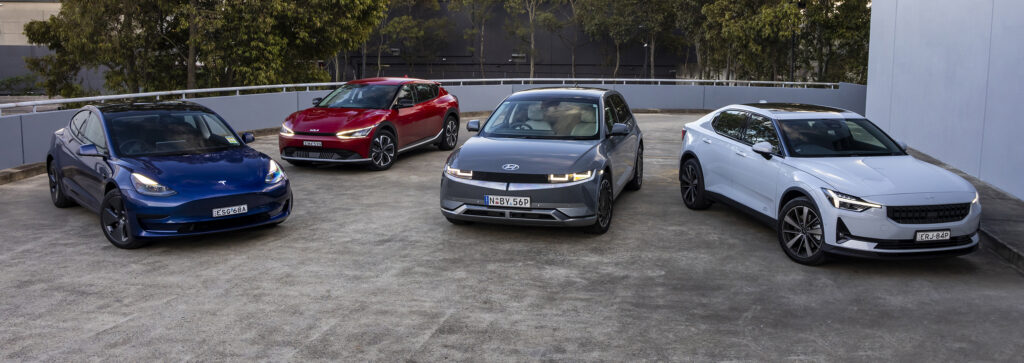
The Hyundai also loses out for its non-existent connectivity as well as a price tag that incorporates a lot of equipment that may not necessarily be appreciated (electrically sliding rear seats, for example). Despite excellent interior space and a funky design, its suspension lacks the finesse of the Kia.
The Polestar is the closest to a true luxury car here, with a classiness that comes from a mix of restraint and quality finishes, materials and attention to detail. It’s also an engaging drive, albeit one that comes at the expense of comfort.
But it loses points for its lack of gear in its base guise and the compromises of starting with a platform that was designed for petrol.
No perfect EV, then, but four very impressive options.
Pricing and specifications: Model 3 vs EV6 vs Polestar 2 vs Ioniq 5
| Hyundai Ioniq 5 RWD | Kia EV6 Air | Polestar 2 Single Motor Long Range | Tesla Model 3 RWD | |
| Price (before on-road costs) | $71,900 | $71,300 | $68,400 | $65,500 |
| Basics | EV, SUV, 5 seats | EV, SUV, 5 seats | EV, hatchback, 5 seats | EV, sedan, 5 seats |
| Range (WLTP) | 451km | 528km | 551km | 491km |
| Battery capacity (usable) | 70kWh | 73kWh | 75kWh | 60kWh |
| Battery warranty | 8 years, 160,000km | 7 years, 150,000km | 8 years, 160,000km | 8 years, 160,000km |
| Battery warranty capacity guarantee | 70% | 70% | 70% | 70% |
| Energy consumption (WLTP) | 17.9kWh/100km | 16.5kWh/100km | 19.7kWh/100km | 13.4kWh/100km |
| Motors | 1 rear, RWD | 1 rear, RWD | 1 front, FWD | 1 rear, RWD |
| Power/torque | 160kW/350Nm | 168kW/350Nm | 170kW/330Nm | 194kW/340Nm |
| AC charging | 10.5kW (Type 2 plug) | 10.5kW (Type 2 plug) | 11kW (Type 2 plug) | 11kW (Type 2 plug) |
| DC charging | 240kW (CCS combo plug) | 240kW (CCS combo plug) | 150kW (CCS combo plug) | 170-180kW (CCS combo plug) |
| 0-100km/h (claimed) | 7.4 seconds | 7.3 seconds | 7.4 seconds | 6.1 seconds |
| 0-100km/h (tested) | 7.74 seconds | 7.21 seconds | 7.62 seconds | 6.31 seconds |
| 60-100km/h (tested) | 3.82 seconds | 3.54 seconds | 3.45 seconds | 2.49 seconds |
| Weight (as measured on test) | 2008kg | 1941kg | 2019kg | 1754kg |
| Weight balance (front/rear) | 47:53 | 46:54 | 55:45 | 48:52 |

